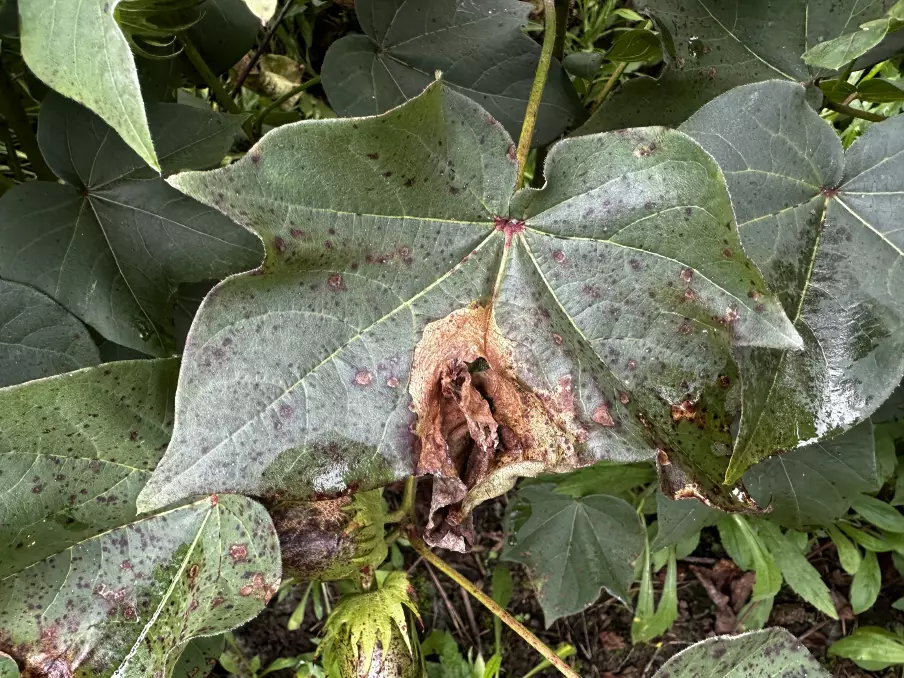The Department of Primary Industries has rolled out trials across North Queensland to determine the impact of a wave of foliar fungal diseases on cotton crops.
The trials, which came on the back of identifying and obversing the diseases during the cropping cycle in 2023, have addressed ways to manage foliar diseases with fungicides and a crop nutrition approach.
Research scientist (crop protection), Samuel Krekeler, said while the impact of foliar diseases on northern productivty was not yet clear, a key research object for 2025 was to assess the impact the diseases are having on northern crop performance.
“The fungal pathogens that cause foliar diseases are common across northern Australia but the environmental conditions that lead to significant crop disease and potential damage would appear to vary between locations and seasons,” Mr Krekeler said.


An example of foliar diseases on a cotton crop in the north. Picture by Qld DPI.
“We have undertaken disease surveys across northern Australia to understand the relative abundance of these pathogens. Our management research has been largely confined to North Queensland but we have plans to expand this to other regions in 2025.”
Unlike southern crops, northern cotton’s growing season is influenced by the tropical monsoon and other factors like humidity, rainfall and temperature.
“These conditions can encourage foliar disease,” Mr Krekeler said.
“Our research aims to enable growers to better manage foliar disease and other potential cotton pests.”
At a recent workshop in Mareeba, Mr Krekeler and Dr Paul Grundy ran growers through disease management methods, including information about the pathogens that have been identified and how they interact with the plant.
“We then discussed the role that fungicides and crop nutrition might play in their management,” Mr Krekeler said.
“The best approach for managing these diseases is still a work in progress but we are aiming to provide growers with a sustainable package of measures.
“Growers and advisors that attended the workshop were very much interested in information that will allow them to better grow cotton and make the most of North Queensland’s unique environment. The feedback was positive.”
The work has been funded by the CRCNA, under its four-year $8.3m Cotton Grains Cattle program which aims to support North Queensland farmers and rural communities with information and skills needed to profit from agricultural commodity booms and identify business plans for resilient crop-livestock systems.
According to the CRCNA, the drivers of the program are “high land and commodity prices, climate variability, cattle biosecurity and market risk, emerging carbon markets and policy settings”.
The program will also enable cotton farm diversification as part of a sustainable cropping system.
Article published in the North Queensland Register, 20 November 2024
Reporter Steph Allen


